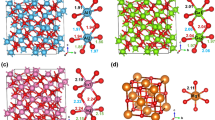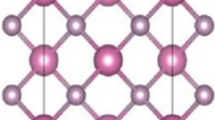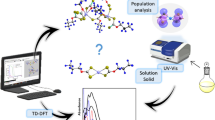Abstract
In this article, we report on the results of experimental and theoretical (DFT calculation of an isolated molecule) investigation of electron density in a triphenylantimony disorbate complex (triphenylantimony bis(hexa-2,4-dienoate), Ph3Sb(O2CCH=CH–CH=CH–CH3)2 (1)). A topological analysis of the electron density was carried out in the framework of the quantum theory of atoms in molecules (QTAIM), which allows to study the nature of chemical bonds and the molecular graph in Ph3Sb(O2CCH=CH–CH=CH–CH3)2 complex. The molecular graph is an important tool for determining the interacting atoms. However, the molecular graph of the triphenylantimony disorbate complex did not show the presence of the “expected” intramolecular interactions between the antimony atom and the carbonyl oxygen one. Such a situation can be caused by electron density low curvature between these atoms. It is extremely difficult case, and sometimes it is not possible to find all the “expected” bond paths and critical points (3,−1). Thus, the molecular graph for this class of compounds does not provide a definitive picture of the chemical bonding and should be complemented with other descriptors, such as а source function (SF) and non-covalent interaction (NCI) index. It was found that in some cases using the SF on the NCI isosurface allows to interpret intramolecular interactions in the absence of a bond critical point more correctly. In this article, presence of intramolecular interaction in the absence of a bond critical point between the antimony atom and the carboxylate oxygen one was shown. The carboxylate fragment always acts as a source of the electron density for the Sb…O(carbonyl) interactions, whereas the antimony atom can be both a source and a sink for it.






Similar content being viewed by others
References
Bajpai K, Singhal R, Srivastava RC (1979). Indian J Chem 18A:73–78
Singhal K, Rastogi R, Raj P (1987). Indian J Chem 26A:146–150
Ma Y, Li J, Xuan Z, Liu R (2001). J Organomet Chem 620:235–242
Li J-S, Ma Y-Q, Cui J-R, Wang R-Q (2001). Appl Organomet Chem 15:639–645
Yu L, Ma Y-Q, Wang G-C, Li J-S (2004). Heteroat Chem 15:32–36
Islam A, Rodrigues BL, Marzano IM, Perreira-Maia EC, Dittz D, Paz Lopes MT, Ishfaq M, Frézard F, Demicheli C (2016). Eur J Med Chem 109:254–267
Islam A, da Silva J, Berbet F, da Silva S, Rodrigues B, Beraldo H, Melo M, Frézard F, Demicheli C (2014). Molecules 19:6009–6030
Liu R-C, Ma Y-Q, Yu L, Li J-S, Cui J-R, Wang R-Q (2003). Appl Organomet Chem 17:662–668
Bara CSA, Silvestru C, Haiduc I (1991). Anticancer Res 11:1651–1655
Passarelli J, Murphy M, Del Re R, Sortland M, Dousharm L, Vockenhuber M, Ekinci Y, Neisser M, Freedman DA (2015). Brainard RL Proc SPIE 9425:94250T
Fukin GK, Baranov EV, Cherkasov AV, Rumyantsev RV (2019). Russ J Coord Chem 45:585–591
Fukin GK, Samsonov MA, Baranov EV, Cherkasov AV, Rumyantsev RV, Arapova AV (2018). Russ J Coord Chem 44:626–634
Fukin GK, Samsonov MA, Arapova AV, Mazur AS, Artamonova TO, Khodorkovskiy MA, Vasilyev AV (2017). J Solid State Chem 254:32–39
Fukin GK, Samsonov MA, Kalistratova OS, Gushchin AV (2016). Struct Chem 27:357–365
Farrugia LJ, Evans C, Lentz D, Roemer M (2009). J Am Chem Soc 131:1251–1268
Smol’yakov AF, Dolgushin FM, Antipin MY (2012). Russ Chem Bull 61:2204–2211
Lugan N, Fernández I, Brousses R, Valyaev DA, Lavigne G, Ustynyuk NA (2013). Dalton Trans 42:898–901
Smol’yakov AF, Dolgushin FM, Ginzburg AG, Bashilov VV, Antipin MY (2012). J Mol Struct 1014:81–91
Kamiński R, Herbaczyńska B, Srebro M, Pietrzykowski A, Michalak A, Jerzykiewicz LB, Woźniak K (2011). Phys Chem Chem Phys 13:10280–10284
Makal AM, Plażuk D, Zakrzewski J, Misterkiewicz B, Woźniak K (2010). Inorg Chem 49:4046–4059
Scheins S, Messerschmidt M, Gembicky M, Pitak M, Volkov A, Coppens P, Harvey BG, Turpin GC, Arif AM, Ernst RD (2009). J Am Chem Soc 131:6154–6160
Fukin GK, Cherkasov AV, Rumyantcev RV, Grishina NY, Sazonova EV, Artemov AN, Stash AI (2019). Mendeleev Commun 29:346–348
Fukin GK, Cherkasov AV, Baranov EV, Rumyantcev RV, Sazonova EV, Artemov AN (2019). ChemistrySelect 4:10976–10982
Bader RFW, Gatti C (1998). Chem Phys Lett 287:233–238 and ref. therein
Farrugia LJ, Macchi P (2009). J Phys Chem A 113:10058–10067 and ref. therein
Gatti C (2012) In: Stalke D (ed) Electron Density and Chemical Bonding II 147:193–285 Springer, Berlin, Heidelberg, and ref. therein
Johnson ER, Keinan S, Mori-Sánchez P, Contreras-Garciá J, Cohen AJ, Yang W (2010). J Am Chem Soc 132:6498–6506
Contreras-Garciá J, Johnson ER, Keinan S, Chaudret R, Piquemal JP, Beratan DN, Yang W (2011). J Chem Theory Comput 7:625–632
Contreras-Garciá J, Johnson ER, Yang W (2011). J Phys Chem A 115:12983–12990
Dodonov VA, Gushchin AV, Brilkina TG (1985). Zh Obshch Khim 55:73–80
Sheldrick GM (2000) SHELXTL V.6.12 Structure determination software suite Bruker AXS Madison
CrysAlis Pro - Software Package Agilent Technologies (2012)
Hansen NK, Coppens P (1978). Acta Crystallogr Sect A 34:909–921
Jelsch C, Guillot B, Lagoutte A, Lecomte C (2005). J Appl Crystallogr 38:38–54
Allen F, Kennard O, Watson DG, Brammer L, Orpen AG, Taylor R (1987). J Chem Soc Perkin Trans 2:S1–S19
Hirshfeld F (1976). Acta Crystallogr Sect A 32:239–244
Stash A, Tsirelson V (2002). J Appl Crystallogr 35(3):371–373
Stash AI, Tsirelson VG (2005). Crystallography Rep 50:177–184
Stash AI, Tsirelson VG (2014). J Appl Crystallogr 47:2086–2089
Frisch MJ, Trucks GW, Schlegel HB, Scuseria GE, Robb MA, Cheeseman JR, Scalmani G, Barone V, Mennucci B, Petersson GA, Nakatsuji H, Caricato M, Li X, Hratchian HP, Izmaylov AF, Bloino J, Zheng G, Sonnenberg JL, Hada M, Ehara M, Toyota K, Fukuda R, Hasegawa J, Ishida M, Nakajima T, Honda Y, Kitao O, Nakai H, Vreven T, Montgomery Jr JA, Peralta JE, Ogliaro F, Bearpark M, Heyd JJ, Brothers E, Kudin KN, Staroverov VN, Kobayashi R, Normand J, Raghavachari K, Rendell A, Burant JC, Iyengar SS, Tomasi J, Cossi M, Rega N, Millam JM, Klene M, Knox JE, Cross JB, Bakken V, Adamo C, Jaramillo J, Gomperts R, Stratmann RE, Yazyev O, Austin AJ, Cammi R, Pomelli C, Ochterski JW, Martin RL, Morokuma K, Zakrzewski VG, Voth GA, Salvador P, Dannenberg JJ, Dapprich S, Daniels AD, Farkas Ö, Foresman JB, Ortiz JV, Cioslowski J, Fox DJ (2009) Gaussian 09 Revision D01 Gaussian Inc Wallingford CT USA
Keith TA (2019) AIMAll v19.10.12 TK Gristmill Software Overland Park KS USA aim.tkgristmill.com
Cambridge Structural Database Version 5.40 University of Cambridge UK 2019
Groom CR, Bruno IJ, Lightfoot MP, Ward SC (2016). Acta Crystallogr Sect B 72:171–179
Addison AW, Rao TN, Reedijk J, van Rijn J, Verschoor GC (1984) J Chem Soc. Dalton Trans:1349–1356
Batsanov SS (1991). Russ J Inorg Chem 36:3015–3037
Janiak C (2000). J Chem Soc Dalton Trans:3885–3896
Fukin GK, Baranov EV, Jelsch C, Guillot B, Poddel’sky AI, Cherkasov VK, Abakumov GA (2011). J Phys Chem A 115:8271–8281
Fukin GK, Samsonov MA, Baranov EV, Poddel’sky AI, Cherkasov VK (2016). Russ Chem Bull 65:54–60
Bader RFW (1990) Atoms in Molecules: A Quantum Theory. Oxford University Press, Oxford
Espinosa E, Molins E, Lecomte C (1998). Chem Phys Lett 285:170–173
Funding
This work was financially supported by the Russian Foundation for Basic Research (17-03-01257). Part of the work on DFT calculation was financially supported by the Russian Science Foundation (17-73-20302).
Author information
Authors and Affiliations
Corresponding author
Ethics declarations
Conflict of interest
The authors declare that they have no conflict of interest.
Additional information
Publisher’s note
Springer Nature remains neutral with regard to jurisdictional claims in published maps and institutional affiliations.
Rights and permissions
About this article
Cite this article
Fukin, G.K., Baranov, E.V., Rumyantcev, R.V. et al. Experimental distribution of electron density in crystals of Ph3Sb(O2CCH=CH–CH=CH–CH3)2 complex: the selection of a reference point for the source function in the absence of a bond critical point between atoms. Struct Chem 31, 1841–1849 (2020). https://doi.org/10.1007/s11224-020-01548-2
Received:
Accepted:
Published:
Issue Date:
DOI: https://doi.org/10.1007/s11224-020-01548-2




